Almost waking up from the New Year's party, we woke up to the news of a possible world war that, fortunately, only ended in a big first scare; A few weeks later, Kobe Bryant passed us by as a result of a terrible accident. Heck, and it was only February! Then March arrived... What seemed so foreign to us ended up shaking the world like never before. COVID-19 became a pandemic and, like the rise of the dollar or the fall in oil prices, it quickly became a topic of general interest.
The effect of the virus is clear: the number of transactions reported by retailers has decreased considerably, people are afraid to go out to do their shopping, despite the panic buying that we have experienced in recent weeks.
Right in the middle of the crisis, there are companies that took advantage of the opportunity to test their online processes, both for the direct sale of their products, and for capturing and attention to the opportunities generated on their websites. Such is the case of Internet and pay television companies, which increased their sales to historic levels. Also large retailers (Mercado Libre or Amazon)—which are delivering groceries at home—took advantage of the opportunity, not to mention the big delivery players, such as Uber Eats, Rappi, etc.
These companies have something in common and that is that they were ready to operate remotely, but there are other brands that do not necessarily have a digital core business and that have optimized their operation, both for monitoring their opportunities and for correctly capturing sales, either through e-commerce or through consultative sales.
Likewise, some companies have expressed solidarity with their employees and consumers, while others were insensitive to the reality of their collaborators, causing a drop in user preferences in general, to the level of generating negative reactions and calls to boycott sales after the lifting of the quarantine. While this happens or not, the reputation of these latest brands has declined like never before, and for this a good crisis containment and online reputation management strategy is necessary.
If you are part of those companies that were forced to operate from the comfort of their living room and are not yet familiar with remote work, we recommend some tools that will make your operation easier:
Productivity
Asana With this tool, your work teams will coordinate activities, track, assign responsible parties, share documents and have a conversation history available to everyone involved.
Toggl Are you worried that your team is not taking advantage of their time in productive activities? Establish a project quota and monitor that priority and non-priority activities are measured correctly. For some companies, it serves to prevent projects quoted in man-hours from overflowing.
Trello Like Asana, Trello is another project management tool, and one of the most popular on the market. The ease of monitoring the progress of projects through a much more graphical user interface has made it one of the favorites.
G Suite Emails, chat, spreadsheets, presentations, documents, compatibility with Microsoft Office, and the best: in the cloud. G suite is a virtual office that allows you to work on your projects from anywhere and have access to all the tools, all the files, all the time.
Capturing business opportunities
Google ADS Many already use search engine optimization ads, but few have exploited the great reach that Google's platform offers; YouTube, Gmail, GDN, Shopping, remarketing, etc. Audience crossovers and correct measurement make this platform the nodal axis of any digital strategy.
Facebook/Instagram ADS Audience personalization, but above all, agile interaction with the user, makes Facebook offer acquisition costs sometimes below half of what they could cost on other platforms. This makes it an ideal channel for generating databases and audiences.
Communication
Slack It concentrates the virtues of Asana, Trello, a chat, and some other communication tools, but it also integrates perfectly with G Suite, Asana, Outlook, Zendesk, among others. Its environment is totally dynamic.
Google Meet One of the most stable platforms to have a video call. This allows you to share your screen and have an active chat during the session. Its free version includes sessions for up to 20 people, but at this time Google expanded its capacity given the contingency.
Zoom Widely used platform similar to Meet, from Google, with the only disadvantage that the session expires 40 minutes after starting (in its free version). For those companies looking for meeting efficiency, this is ideal.
CRM
Leaving aside the main CRMs and ERPs that have lead management modules such as Salesforce, Oracle, etc., we have two recommendations:
Hubspot Some companies use it because it is relatively easy to integrate and configure. Thanks to its free version, many brands that are in the process of implementing a more robust tool opt for this CRM, in which it is possible to automate a commercial journey that will not let your opportunities go cold.
PipeDrive For some, a little-known alternative. For others, the best and easiest way to manage business opportunities. It allows you to create deals by hand or integrate them into your website so they can be distributed to your sales team. This tool provides reports on the performance of the sales force.
Crises do not warn—and tragedies even less so. Perhaps our last recommendation for brands is to have a special allocation for the implementation of platforms that allow your team to operate under circumstances of this nature and your company to continue generating income.
And we hope to meet again when all this has become an anecdote and we resume our daily activities. Until then, the best option for those of us who live digitally will be remote work supported by all these tools.







